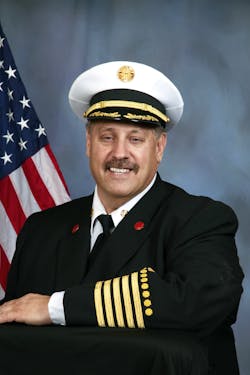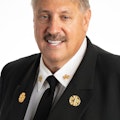One saying that often gets a chuckle after I get caught in a mistake is, “I’ve never made a mistake in my life. I thought I did once, but I was wrong.” Let’s face it, we all make mistakes. It is a part of being human. Many people act on the premise that making a mistake is some type of abnormality, but in reality, it happens all the time.
Unfortunately, a firefighter-paramedic making a mistake could cost someone their life. The decisions you make when it comes to patient planning, administering drugs, completing a procedure or even when you are not on a call leaves very little room for mistakes. Intubating an esophagus or giving the wrong dosage of a drug is not something you can just throw your hands up in the air and say, “It’s just a mistake!” Although mistakes do happen, there are two in particular that firefighter-paramedics can control—and should seek to avoid.
Documentation problems
The first big mistake involves documentation. EMTs and paramedics are notorious for not properly documenting the chief complaint, the assessment findings, the patient history and treatment, vital signs, and other details that help paint a picture of how the patient presented and the provider’s actions.
In my work as an expert witness, I have the opportunity to read patient reports written by paramedics. I am sometimes shocked by the lack of documentation, poor grammar, misspelled words and other mistakes. Some of the worst are medical first responder reports that say, “See Ambulance Report #X,” even though the first responder assessed the patient, began treatment and may have even done advanced life support procedures prior to the arrival of the ambulance.
Have you ever read a police report? They’re extremely detailed and rarely leave out even a miniscule detail. I wish the process for teaching paramedics to write reports was the same as is used for teaching police officers.
Electronic patient care reports have both helped and hurt in our documentation efforts. Some software will not let you close and upload the form until certain fields are complete. Bluetoothing data from the monitor/defibrillator also helps capture important points in the patient contact. But on other electronic patient care forms, I see blank fields, probably because the software is difficult to navigate and the paramedic needs to move from screen to screen. When you move from screen to screen instead of looking at an entire document, you can easily miss certain fields.
The problem with poor documentation is that it becomes a legal record that may be later used in a court of law. Additionally, it is also important to document treatment plans for patients in the emergency room and after admission to the hospital.
Talking down to patients
The second biggest mistake firefighter/paramedics can make on any scene is treating patients poorly. There is a reason why the word “service” is part of the industry names “fire service” and “emergency medical service.” The general public typically has a positive opinion of firefighters and EMS personnel, and it is important to maintain this confidence.
Don’t try using big medical words to impress your patients or their family members. They assume you know what you are doing; that is the reason they called. And never speak down to your patients. Sometimes firefighters-paramedics enter the home of someone who is poor or mentally challenged and immediately make a judgment that they are “better” than them. These attitudes can come out when speaking to a patient or family members. Remember, you are in their home and you need to be respectful. I have seen firefighters and paramedics enter a home and, without asking, turn down someone’s TV or radio if it is too loud. The proper thing to do is ask for permission before touching the dial or ask the people to turn it off themselves. Always remember, you were invited into their home and you should be respectful. You’ll get more done with honey than vinegar.
In sum
While there are certainly other types of mistakes that we can make on the scene, these are two big mistakes that are easily fixed by being mindful of the situation and remembering our role.
About the Author
Gary Ludwig
GARY LUDWIG has served in three fire departments over his career: St. Louis, Memphis, and Champaign, IL. His fire, EMS and rescue career spanned a total of 46 years, and he has been a paramedic for over 44 years. Ludwig served as president of the International Association of Fire Chiefs in 2019-20. He has a Master’s degree in Business and Management, has written over 500 articles for professional fire and EMS publications and is the author of seven books.
Connect with Gary
Email: [email protected]
Facebook: Gary Ludwig
Twitter: @ChiefGaryLudwig
Website: garyludwig.com

